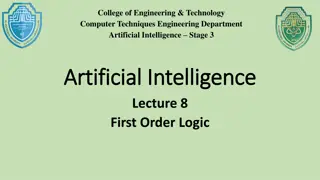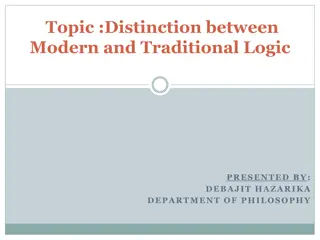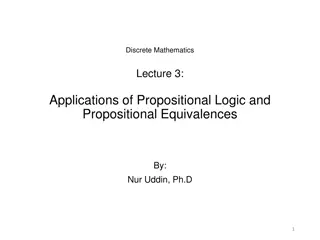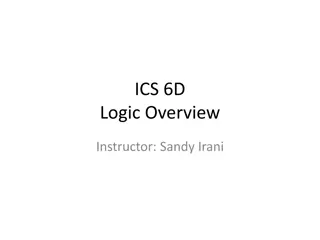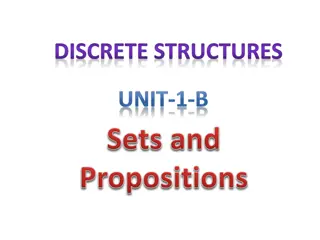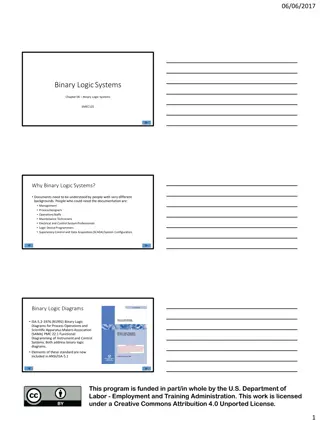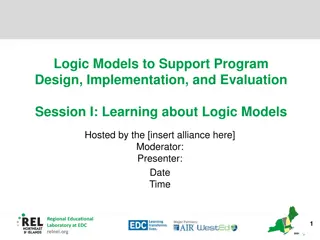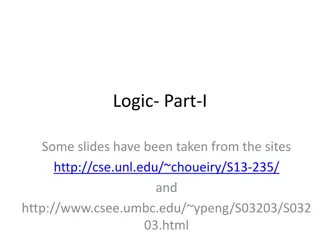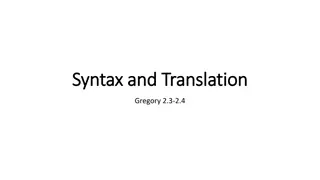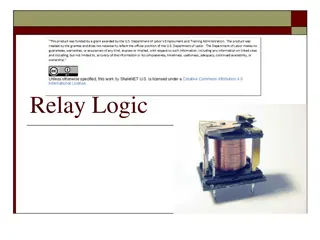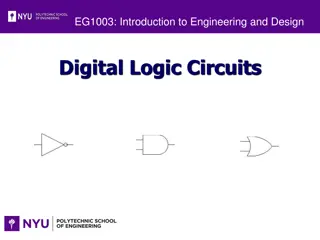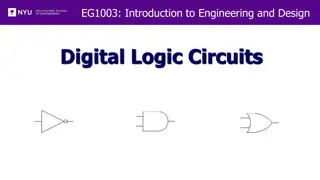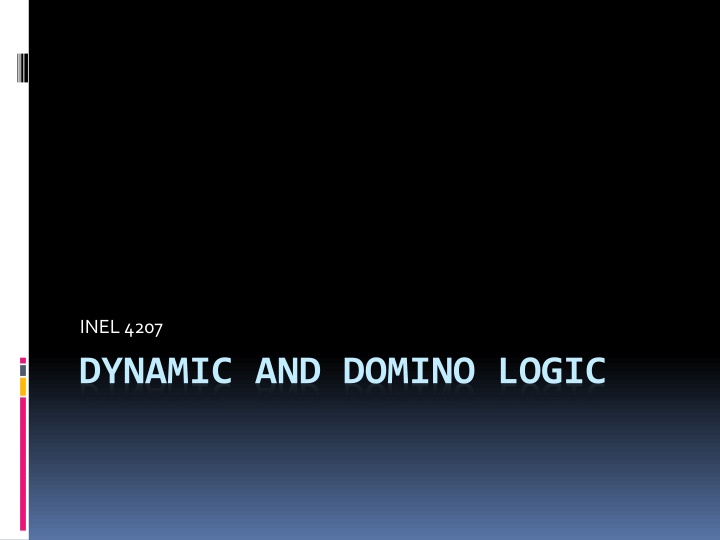
Dynamic and Domino Logic: Clocked Logic Design Methodology
Explore dynamic and domino logic in combinatory circuits, focusing on clocked logic design methodology implemented in MOS technology. Learn about the features, benefits, and challenges of dynamic logic compared to static logic through examples and problem-solving scenarios.
Download Presentation

Please find below an Image/Link to download the presentation.
The content on the website is provided AS IS for your information and personal use only. It may not be sold, licensed, or shared on other websites without obtaining consent from the author. If you encounter any issues during the download, it is possible that the publisher has removed the file from their server.
You are allowed to download the files provided on this website for personal or commercial use, subject to the condition that they are used lawfully. All files are the property of their respective owners.
The content on the website is provided AS IS for your information and personal use only. It may not be sold, licensed, or shared on other websites without obtaining consent from the author.
E N D
Presentation Transcript
INEL 4207 DYNAMIC AND DOMINO LOGIC
Dynamic Logic: Clocked Logic Design methodology in combinatory logic circuits, particularly those implemented in MOS technology. Temporary storage of information in stray and gate capacitances Two phases Precharge Evaluation Are faster than static logic and required less area, more difficult to design for
Dynamic logic timing sequence Figure 14.19 (a) Basic structure of dynamic-MOS logic circuits. (b) Waveform of the clock needed to operate the dynamic logic circuit. (c) An example circuit.
Example 14.20 Fig. 14.20 b)Precharge Phase, =0 Y=ABCD Fig. 14.20 c)Evaluation Phase, =1 Fig 14.20 a) Dynamic Logic Circuit
Example Problem 14.20 Assume VDD = 1.8V : Vt = 0.5V nCox = 4 pCox = 0.3mA/V 2 (W/L)n =0.27/0.18 (including Qe), (W/L)p = 0.54 m/0.18 m (for Qp), CL =20fF. a) For the pre-charge operation, with Qp s gate at 0V and if CL is fully discharged at t = 0, find the time for vY to rise from 10% to 90% of VDD. b) For A = B = C = D = 1, find tPHL
Calculation of rise time Calculating rise time (tr) the signal at the output goes from 10% its final value to 90% its final value. Final Value is VDD VY=0.1VDD=0.18V; Qp is in saturation mode For rise time we are at precharge ( V ) C 2 W 2 ( 1 . 0 ) p OX = i V V D DD DD tp L p . 0 54 ( 3 . 1 ) 2 = = 5 . 0 75 191 A . 0 18
Calculation of rise time At VY=0.9VDD=1.62V; QP is in triode mode ( V )( 1 W ( 9 . 0 ) ) ( ) 2 = 9 . 0 9 . 0 i V C V V V V V D DD p OX DD tp DD DD DD DD 2 L p ( 9 . 0 ) = 49 i V A D DD
Rise Time Average Current, Iav=(i1+i2)/2 Iav=119.6uA C V Y = = . 0 19 t ns r I av
Propagation delay High to Low When A=B=C=D=1, All N transistors are on. Replace 5 identical transistor with 1 equivalent transistor. Qeq has a W/L=1/5(W/L)=0.3 For VY=VDD Qeq in sat. 1 W ( ) ( ) ( ) 2 = i V C V V D DD n OX DD tn 2 L eq ( ) = 76 1 . i V A D DD
Propagation delay High to Low Iav=72.5 uA At VY=VDD/2; Qeq is in triode region ( V DD D 2 / )( ) 2 ( ) 2 1 W 2 ) ( V V = i C V V DD DD n OX DD tn 2 L eq ( ) = 2 / 68 9 . i V A D DD ( ) 2 C V V DD DD = = . 0 25 t ns PHL I av
Cascading dynamic logic gates By the time VY1 drops to Vt, CL2 can loose a significant amount of charge causing VY2 to can be significantly reduced. Figure 14.22 Two single-input dynamic logic gates connected in cascade. With the input A high, during the evaluation phase CL2 will partially discharge and the output at Y2 will fall lower than VDD, which can cause logic malfunction.
Domino Logic A cascadable Dynamic Logic gate
Domino Logic Figure 14.23. The Domino CMOS logic gate. The circuit consists of a dynamic-MOS logic gate with a static-CMOS inverter connected to the output. During evaluation, Y either will remain low (at 0 V) or will make one 0- to-1 transition (to VDD).
Cascaded Domino Logic Gate End of Precharge X1=VDD Y1=0; X2=VDD and Y2=0 If A=1 as goes high CL1 will start discharge through Q1 but Q2 will remain off (CL2 charged) until x1 falls below the Vtn of the inverter I1, Y1 goes up Q2 will turn on and then CL2 will discharge, not before)

